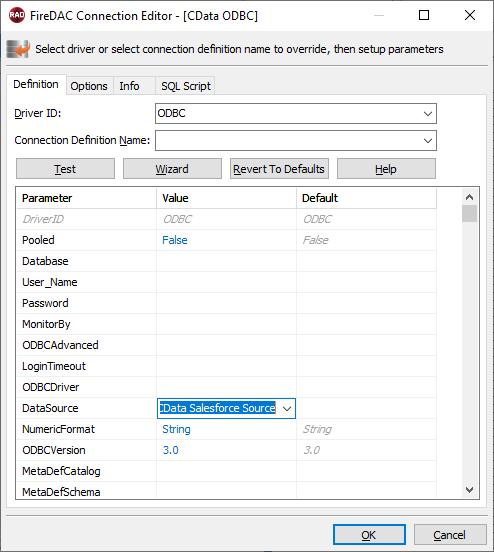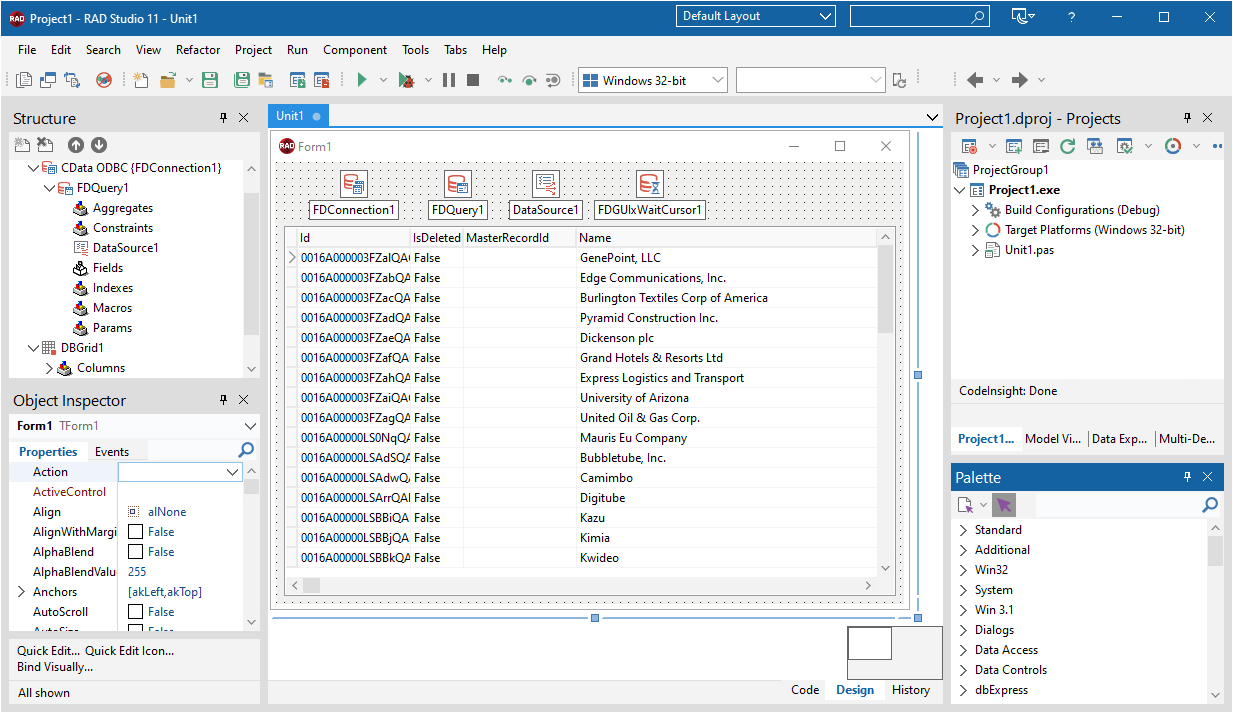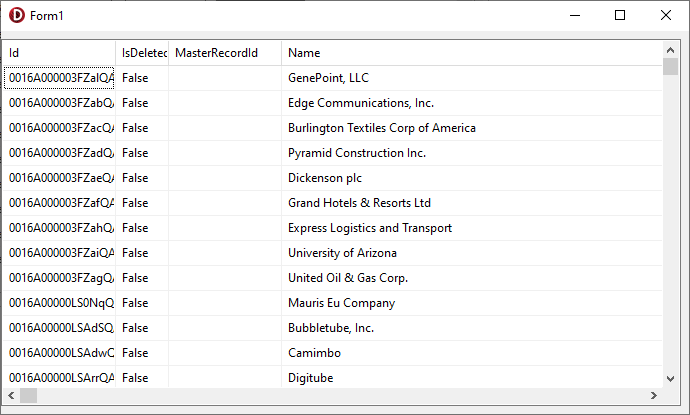Build a Simple VCL Application for WooCommerce Data
Embarcadero RAD Studio provides a development environment for Delphi and C++Builder applications. With the CData ODBC Driver for WooCommerce, you gain access to live WooCommerce data within RAD Studio, abstracting the data into tables, views, and stored procedures that can be used to retrieve and update WooCommerce data. This article will walk through connecting to WooCommerce and creating a simple VCL application with the Form Designer.
Create a Connection to WooCommerce Data
If you have not already, first specify connection properties in an ODBC DSN (data source name). This is the last step of the driver installation. You can use the Microsoft ODBC Data Source Administrator to create and configure ODBC DSNs.
WooCommerce supports the following authentication methods: one-legged OAuth1.0 Authentication and standard OAuth2.0 Authentication.
Connecting using one-legged OAuth 1.0 Authentication
Specify the following properties (NOTE: the below credentials are generated from WooCommerce settings page and should not be confused with the credentials generated by using WordPress OAuth2.0 plugin):
- ConsumerKey
- ConsumerSecret
Connecting using WordPress OAuth 2.0 Authentication
After having configured the [ plugin, you may connect to WooCommerce by providing the following connection properties:
]
- OAuthClientId
- OAuthClientSecret
- CallbackURL
- InitiateOAuth - Set this to either GETANDREFRESH or REFRESH
In either case, you will need to set the Url property to the URL of the WooCommerce instance.
You can then follow the steps below to use the Data Explorer to create a FireDAC connection to WooCommerce data.
- In a new VCL Forms application, expand the FireDAC node in the Data Explorer.
- Right-click the ODBC Data Source node in the Data Explorer.
- Click Add New Connection.
- Enter a name for the connection.
- In the FireDAC Connection Editor that appears, set the DataSource property to the name of the ODBC DSN for WooCommerce.
![A FireDAC connection to the ODBC data source. (Salesforce is shown.)]()
Create VCL Applications with Connectivity to WooCommerce Data
Follow the procedure below to start executing queries to WooCommerce data from a simple VCL application that displays the results of a query in a grid.
-
Drop a TFDConnection component onto the form and set the following properties:
- ConnectionDefName: Select the FireDAC connection to WooCommerce data.
- Connected: Select True from the menu and, in the dialog that appears, enter your credentials.
-
Drop a TFDQuery component onto the form and set the properties below:
Drop a TDataSource component onto the form and set the following property:
- DataSet: In the menu for this property, select the name of the TFDQuery component.
-
Drop a TDBGrid control onto the form and set the following property:
- DataSource: Select the name of the TDataSource.
- Drop a TFDGUIxWaitCursor onto the form — this is required to avoid a run-time error.
![Components in FireDAC used to databind an editable grid to the data source. (Salesforce is shown.)]()
You now have an executable application that displays the results of the SQL Query set in the TFDQuery object.
![The Data Displayed in a Form. (Salesforce is shown.)]()
Related Articles
Below you can find other articles for using the CData ODBC Driver with RAD Studio, Delphi, and C++ Builder.








